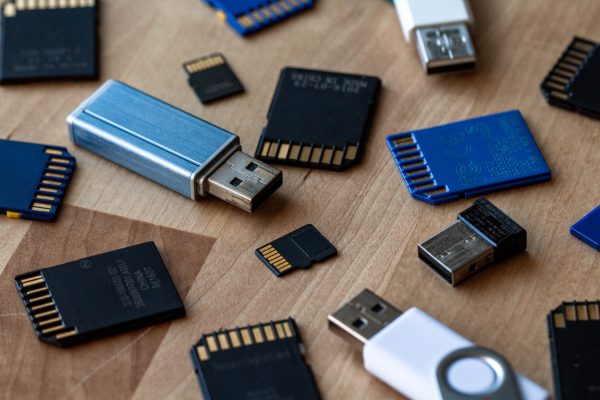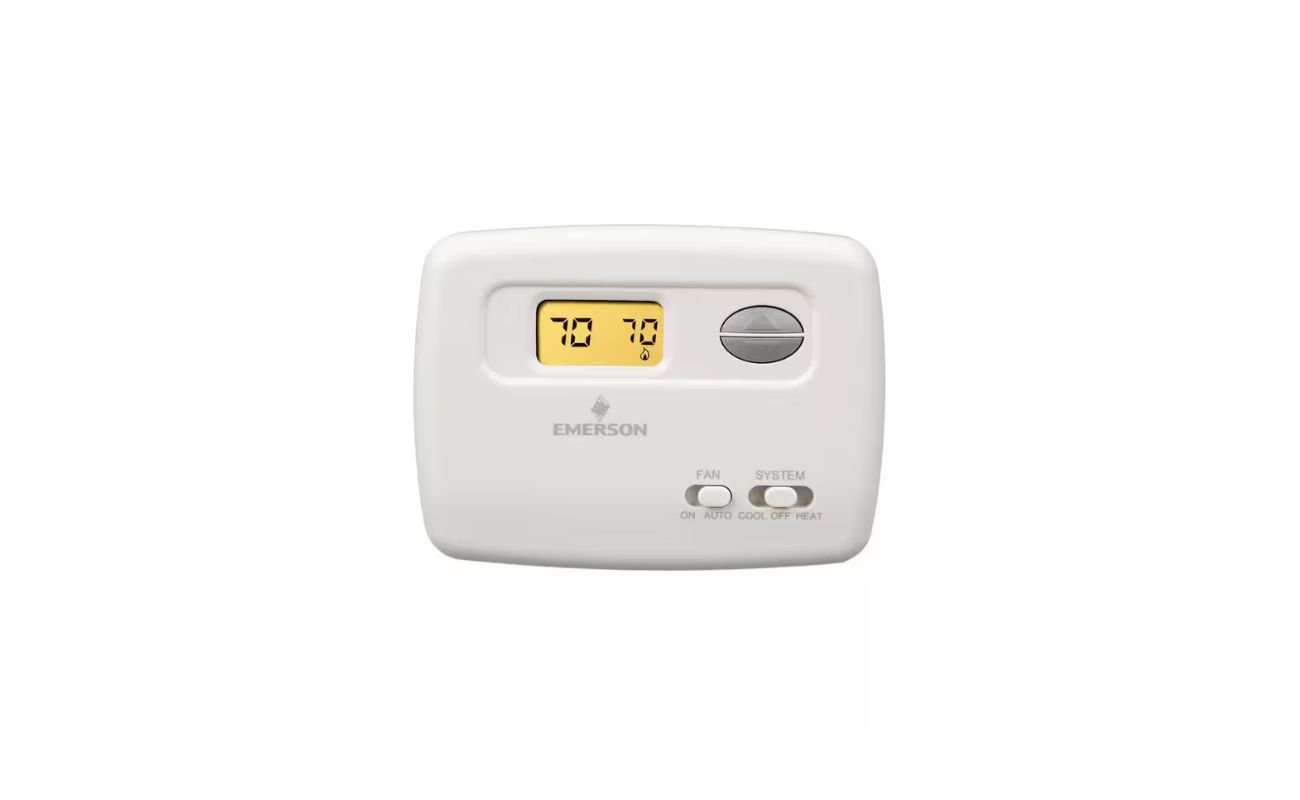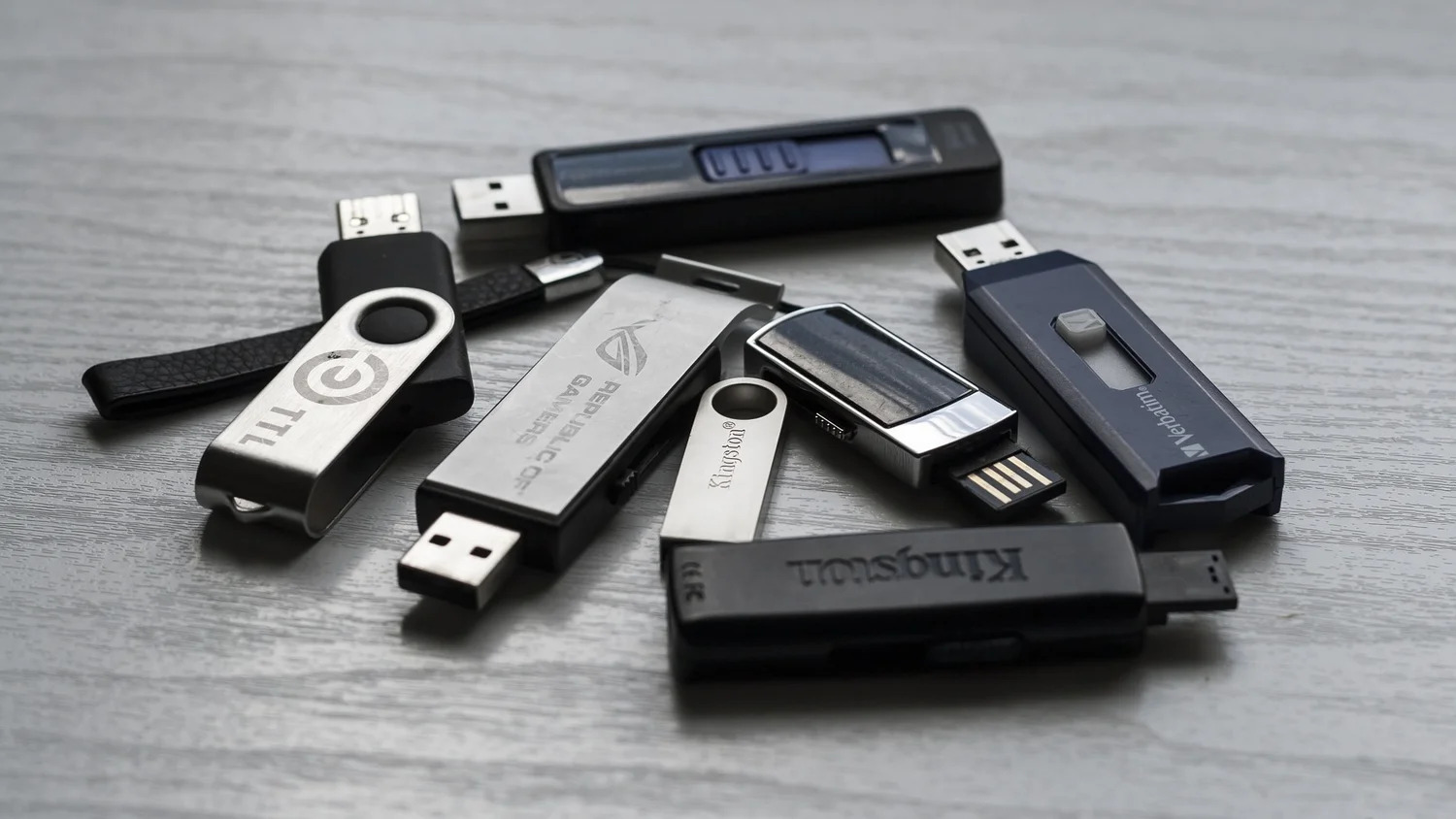

Articles
What Is A Flash Storage
Modified: January 21, 2024
Looking for fast and reliable data storage? Discover the benefits of flash storage and how it can enhance your data management capabilities.
(Many of the links in this article redirect to a specific reviewed product. Your purchase of these products through affiliate links helps to generate commission for Storables.com, at no extra cost. Learn more)
What is a Flash Storage
Flash storage is a type of non-volatile memory that is used to store and retrieve data in electronic devices. Unlike traditional hard drives that use spinning disks and magnetic storage, flash storage employs a solid-state technology, making it faster, more reliable, and more durable.
Flash storage works by utilizing transistors to store data in cells made of floating gate transistors. These transistors can be electrically programmed and erased, allowing for quick read and write operations. The absence of moving parts in flash storage eliminates the need for mechanical components, reducing the chances of failure and enhancing the overall performance of the device.
Key Takeaways:
- Flash storage offers faster data access, reliability, durability, and energy efficiency compared to traditional hard drives. Its future holds potential for higher capacities, improved performance, and reduced costs, shaping the way we store and access data in the digital world.
- Flash storage has revolutionized consumer electronics, providing high-capacity, high-speed storage solutions that enhance performance and functionality. Its future promises even higher capacities, enhanced performance, and seamless integration with emerging technologies, driving innovation in data storage and access.
Read more: What Is Flashing On A Chimney
How Flash Storage Works
Flash storage is based on the concept of NAND (Not And) gates, which are the building blocks of its memory cells. These cells consist of a floating gate transistor and a control gate, with an insulating oxide layer between them. When a positive voltage is applied to the control gate, electrons are trapped in the floating gate, representing a data bit. The absence of electrons in the floating gate indicates a different data bit.
To read data from flash storage, a small voltage is applied to the control gate, allowing the electrons in the floating gate to pass through the insulating layer. By detecting the presence or absence of electrons, the stored data can be retrieved.
Advantages of Flash Storage
Flash storage offers several advantages over traditional hard drives:
- Speed: Flash storage provides faster data access and transfer speeds, allowing for quicker boot times and improved application performance.
- Reliability: With no moving parts, flash storage is less prone to mechanical failures and is more resistant to shocks and vibrations.
- Durability: Flash storage can withstand a larger number of read and write cycles compared to traditional hard drives, increasing its lifespan.
- Energy Efficiency: Flash storage consumes less power, resulting in longer battery life for portable devices and reduced energy costs for data centers.
- Compact Size: Flash storage is physically smaller than traditional hard drives, making it ideal for space-constrained devices like laptops, tablets, and smartphones.
These advantages have made flash storage the preferred choice in a wide range of applications, including consumer electronics, data centers, and enterprise storage systems.
Introduction
With the increasing amount of data being generated and consumed in today’s digital world, the need for efficient and reliable storage solutions has become paramount. Flash storage has emerged as a revolutionary technology that has transformed the way we store and access data. By replacing traditional hard drives with solid-state memory, flash storage offers significant advantages in terms of speed, reliability, and durability.
Flash storage has gained widespread popularity in consumer electronics, such as smartphones, tablets, and laptops, due to its ability to deliver faster boot times, quicker application launches, and improved overall performance. Additionally, its compact size has made it an ideal choice for portable devices where space is limited.
Beyond consumer electronics, flash storage has found its way into data centers and enterprise storage systems. The speed and reliability of flash storage have made it an excellent solution for handling high-demand applications, such as databases, virtualization, and analytics. Data centers can benefit from faster data access, reduced latency, and increased productivity.
One of the key advantages of flash storage is its lack of moving parts. Traditional hard drives rely on mechanical components that can be susceptible to failures due to shocks, vibrations, and wear and tear. In contrast, flash storage is more durable and robust. It can withstand the rigors of everyday use without compromising on performance or data integrity.
Flash storage also offers energy efficiency benefits. With lower power consumption compared to traditional hard drives, flash memory translates into longer battery life for portable devices and reduced energy costs for data centers. This efficiency is crucial in today’s eco-conscious society where sustainability is a top concern.
In the following sections, we will delve deeper into how flash storage works, the various types of flash storage available, and its advantages over traditional hard drives. We will explore solid-state drives (SSDs), USB flash drives, memory cards, and hybrid drives. Additionally, we will compare flash storage to traditional hard drives and analyze its impact on consumer electronics and the future of storage technology.
Now, let’s dive into the fascinating world of flash storage and discover how this innovative technology is changing the way we store and access our data.
Key Takeaways:
- Flash storage offers faster data access, reliability, durability, and energy efficiency compared to traditional hard drives. Its future holds potential for higher capacities, improved performance, and reduced costs, shaping the way we store and access data in the digital world.
- Flash storage has revolutionized consumer electronics, providing high-capacity, high-speed storage solutions that enhance performance and functionality. Its future promises even higher capacities, enhanced performance, and seamless integration with emerging technologies, driving innovation in data storage and access.
Read more: What Is Flashing On A Chimney
How Flash Storage Works
Flash storage is based on a technology called NAND (Not And) flash memory. It consists of a series of memory cells, organized in a grid-like structure, where each cell can store multiple bits of data. These memory cells are made up of floating gate transistors that can store electrical charges to represent the binary data.
Every memory cell in a flash storage device has a unique address, allowing the processor to access the specific cell required to read or write data. To write data, the flash storage controller sends an electrical charge to the selected memory cell. Depending on the desired value (either a 0 or a 1), the controller applies a higher voltage to trap or release electrons in the floating gate of the transistor. This process alters the electrical charge in the memory cell, effectively storing the desired data.
Reading data from flash storage involves a slightly different process. The flash storage controller applies a lower voltage to the selected memory cell, allowing the electrons to either pass through or get obstructed by the insulating material. The controller then measures the resulting electrical current, determining whether the stored data represents a 0 or a 1.
One of the unique features of flash storage is the ability to perform multiple read and write operations simultaneously. This is achieved by utilizing a technique called “wear leveling.” Wear leveling ensures that each memory cell is used evenly, preventing excessive wear on specific cells and extending the overall lifespan and reliability of the flash storage device.
Another essential feature of flash storage is its ability to erase data. Unlike traditional hard drives, flash storage cannot overwrite existing data at the cell level. Instead, to erase data, a block of cells must be cleared simultaneously. To do this, the flash storage controller applies a higher voltage to empty the charge from all the cells in the block, effectively resetting them and making them ready for new data to be written.
Overall, the operation of flash storage is electronic and does not rely on any mechanical parts or spinning disks, making it much faster and more durable than traditional hard drives. The absence of moving parts also means that flash storage is less susceptible to physical damage caused by shocks, drops, or vibrations.
It’s worth noting that over time, frequent write and erase operations can cause degradation in the performance and lifespan of flash storage. To mitigate this, advanced algorithms and error-correction techniques are implemented by the flash storage controller to ensure data integrity and extend the overall lifespan of the device.
In summary, flash storage works by using floating gate transistors to store and retrieve data. Its ability to perform fast, simultaneous read and write operations, combined with its durability and reliability, has made flash storage an indispensable technology in various applications, from consumer electronics to enterprise-level storage solutions.
Advantages of Flash Storage
Flash storage offers numerous advantages over traditional hard drives, making it a preferred choice in many applications. Here are some of the key advantages of flash storage:
- Speed: Flash storage provides significantly faster data access and transfer speeds compared to traditional hard drives. This translates into quicker boot times, faster application launches, and improved overall system performance. Whether you’re accessing files on your laptop or running intensive applications in a data center, the speed of flash storage can greatly enhance productivity and user experience.
- Reliability: Flash storage is highly reliable due to its lack of moving parts. Traditional hard drives have spinning disks and mechanical components that can be prone to failure and damage. In contrast, flash storage uses solid-state technology, which is more resistant to shocks, vibrations, and other physical impacts. This increased reliability ensures that your data remains secure and accessible, even in demanding environments.
- Durability: Flash storage is more durable and robust than traditional hard drives. The absence of moving parts means that there is less risk of mechanical failure or damage. Flash storage can withstand rough handling, drops, and temperature fluctuations, making it an ideal choice for portable devices like laptops and smartphones.
- Energy Efficiency: Flash storage consumes less power compared to traditional hard drives. This not only results in longer battery life for laptops, tablets, and smartphones, but it also reduces energy consumption in data centers. With the increasing focus on energy efficiency and sustainability, the lower power requirements of flash storage make it an environmentally friendly storage option.
- Compact Size: Flash storage is physically smaller and more compact than traditional hard drives. This makes it an ideal choice for devices with limited space, such as ultrabooks, tablets, and mini PCs. The small form factor of flash storage enables manufacturers to create sleek and slim devices without compromising storage capacity or performance.
- Noiseless Operation: Traditional hard drives produce noise due to the spinning disks and mechanical components. Flash storage, on the other hand, operates silently. This is particularly important for home theater PCs, recording studios, and other noise-sensitive environments where quiet operation is essential.
These advantages have contributed to the widespread adoption of flash storage in various fields. From consumer electronics to enterprise-level storage systems, flash storage has become the go-to option for those seeking faster, more reliable, and efficient storage solutions.
Types of Flash Storage
Flash storage comes in various forms to cater to different needs and applications. Let’s explore some of the most common types of flash storage:
Solid-State Drives (SSDs)
SSDs are the most prevalent form of flash storage. They are designed to replace traditional hard drives in laptops, desktops, and servers. SSDs offer higher performance, faster data access, and improved reliability compared to conventional hard drives. They come in standard form factors such as 2.5-inch and M.2, allowing for easy installation and compatibility with a wide range of devices.
USB Flash Drives
USB flash drives, also known as thumb drives or flash disks, are portable storage devices that connect to computers via USB ports. They are lightweight, compact, and convenient for transferring and storing data. USB flash drives have become a popular choice for individuals who need to carry files, documents, and media with them on the go. They come in various storage capacities, with options ranging from a few gigabytes to multiple terabytes.
Read more: What Is A Flashing In Construction
Memory Cards
Memory cards are used in devices such as digital cameras, smartphones, tablets, and gaming consoles to provide expandable storage. Common memory card formats include Secure Digital (SD), microSD, CompactFlash (CF), and Memory Stick. These small, portable storage devices offer high-speed data transfer and varying storage capacities to meet the diverse needs of different devices and users.
Hybrid Drives
Hybrid drives combine the benefits of flash storage and traditional hard drives. They consist of a smaller flash storage component and a larger spinning disk component. The flash storage acts as a cache to store frequently accessed data, allowing for faster read and write operations. Hybrid drives offer the higher storage capacity of traditional hard drives with improved performance thanks to the flash cache.
Enterprise Flash Storage
Enterprise flash storage solutions are specifically designed for use in data centers and large-scale storage systems. These solutions often involve multiple flash storage devices working together to provide high-performance, highly reliable storage for critical data and applications. Enterprise flash storage offers features such as data tiering, advanced data protection, and enhanced management capabilities to meet the demanding requirements of enterprise-level environments.
Each type of flash storage serves specific purposes, whether it’s enhancing the performance of personal computers, providing portable storage options, expanding the storage capacity of devices, combining the benefits of flash and traditional drives, or meeting the storage needs of enterprise-level systems. The wide range of options ensures that there is a suitable flash storage solution available for every application and requirement.
Solid-State Drives (SSDs)
Solid-State Drives (SSDs) are a type of flash storage specifically designed to replace traditional hard drives in laptops, desktops, and servers. They have become increasingly popular due to their higher performance, faster data access, and improved reliability compared to conventional hard drives.
SSDs consist of flash memory chips that store data in a non-volatile manner, meaning the data remains even when power is disconnected. This allows for quick and reliable access to stored data without the need for any moving parts. Instead of using spinning disks and mechanical read/write heads like traditional hard drives, SSDs utilize integrated circuits and solid-state technology to store and retrieve data.
One of the primary advantages of SSDs is their significantly faster data transfer speeds. Traditional hard drives use magnetic platters that require time to spin and read data from different sectors. In contrast, SSDs can access data instantaneously, resulting in faster boot times, quicker application launches, and reduced file transfer times. This speed boost greatly enhances the overall performance of systems using SSDs.
Furthermore, SSDs offer a higher level of reliability. Without any moving parts or spinning disks, there is less risk of mechanical failure or damage. This makes SSDs more resistant to shocks, drops, and vibrations, ensuring that data remains secure and system operation remains stable even in demanding environments. Additionally, the lack of moving parts reduces the chances of disk fragmentation and data corruption, improving long-term data integrity.
Another advantage of SSDs is their lower power consumption, making them ideal for portable devices and energy-efficient systems. As SSDs don’t require any power to spin disks or move read/write heads, they consume less energy compared to traditional hard drives. This translates into longer battery life for laptops, tablets, and smartphones. Additionally, in data centers and server environments, SSDs contribute to reduced energy costs and lower cooling requirements.
SSDs come in various form factors, such as 2.5-inch drives and M.2 modules, allowing for easy installation and compatibility with different devices. They are available in a range of storage capacities, from a few hundred gigabytes to multiple terabytes, providing flexibility to meet diverse storage needs.
In recent years, SSDs have become more affordable, making them a viable option for consumers and businesses alike. As their prices continue to decrease and their performance continues to improve, SSDs are quickly replacing traditional hard drives as the primary storage solution in many computing systems.
In summary, solid-state drives (SSDs) offer higher performance, faster data access, improved reliability, and lower power consumption compared to traditional hard drives. The widespread adoption of SSDs in laptops, desktops, and servers is transforming the way we store and access data, delivering faster and more efficient computing experiences.
USB Flash Drives
USB flash drives, also known as thumb drives or flash disks, are portable storage devices that connect to computers via USB ports. They have gained tremendous popularity due to their compact size, convenience, and versatility in storing and transferring data.
The small, lightweight design of USB flash drives makes them highly portable and easily transportable. They can be carried in pockets, purses, or attached to keychains, allowing users to conveniently access their files on the go. USB flash drives are equipped with a connector that can plug directly into a computer’s USB port, eliminating the need for any additional cables or power sources.
USB flash drives utilize flash memory technology to store data. They contain integrated circuits that store and retrieve data electronically, similar to solid-state drives (SSDs). This technology offers several advantages, including fast data access, high reliability, and durability.
One of the key advantages of USB flash drives is their large storage capacity. They are available in various sizes, ranging from a few gigabytes to multiple terabytes. This allows users to store and carry a significant amount of data, including documents, photos, videos, music, and more.
Another notable advantage of USB flash drives is their ease of use. They are compatible with almost all modern computers and operating systems, including Windows, macOS, and Linux. Simply plug the USB flash drive into a USB port, and it will quickly appear as a removable storage device, ready to transfer or access files. USB flash drives are also hot-swappable, meaning they can be connected and disconnected while the computer is powered on, without the need for a system restart.
The high-speed USB interface used by flash drives allows for fast data transfer rates. USB 3.0 and USB 3.1 drives offer even faster speeds, enabling quick file transfers and reducing waiting times. This makes USB flash drives ideal for quickly transporting large files or creating backups of important data.
USB flash drives also support various file systems, including FAT32, exFAT, and NTFS, which allows them to be used across different devices and platforms. This means that files stored on a USB flash drive can be easily accessed and shared between different computers, laptops, and even some compatible smart TVs and multimedia devices.
Furthermore, USB flash drives are not just limited to file storage. They can also be used as bootable devices, allowing users to install or run operating systems and software directly from the USB drive. This flexibility makes USB flash drives valuable for system administrators, technicians, and those who need to troubleshoot or repair computers.
USB flash drives have become an essential tool for individuals and businesses alike. They are used for everyday tasks such as transferring files, creating backups, and sharing data. Their convenience, versatility, and large storage capacities make USB flash drives an invaluable solution for personal and professional storage needs.
Memory Cards
Memory cards are small, portable storage devices used in a wide range of devices, including digital cameras, smartphones, tablets, gaming consoles, and more. They provide additional storage capacity, expandable memory, and easy data transfer. Memory cards have become an essential accessory for many electronic devices due to their versatility and convenience.
Common memory card formats include Secure Digital (SD), microSD, CompactFlash (CF), and Memory Stick. Each format has different physical sizes and specifications, making them suitable for specific devices and applications.
One of the primary advantages of memory cards is their ease of use. They are designed to be inserted directly into a device’s memory card slot or used with a compatible adapter. Once inserted, they become an integral part of the device’s storage system, allowing users to save, store, and access their data.
Memory cards typically offer varying storage capacities, allowing users to choose the size that best suits their needs. They are available in a wide range of sizes, from a few gigabytes to multiple terabytes. This flexibility enables users to store large amounts of data, including photos, videos, music, documents, and applications.
Memory cards are known for their high-speed data transfer capabilities. The latest generation of memory cards, such as SDXC and microSDXC, support fast data transfer rates, enabling quick file transfers and reducing buffer times when capturing photos or recording videos. This is particularly important in devices that require constant data stream, such as high-resolution cameras or gaming consoles.
Memory cards are highly portable due to their small form factor. They can be easily carried in pockets, camera bags, or pouches, making them ideal for individuals who need to frequently move or exchange data across different devices. The compact size of memory cards also means they take up minimal space, allowing for easy storage and organization.
Another advantage of memory cards is their compatibility with a wide range of devices. Many devices, including cameras, smartphones, tablets, and laptops, come equipped with memory card slots that support multiple formats. This allows users to easily transfer data between devices, backup important files, or expand the available storage capacity of their devices.
The durability of memory cards is another notable advantage. Built to withstand various environmental conditions, memory cards are resistant to water, dust, temperature fluctuations, and even magnetic fields. This ensures that data remains intact and the cards remain functional even in challenging circumstances.
Memory cards are designed for frequent read and write operations, making them reliable for storing and accessing data. Additionally, memory cards are non-volatile, meaning they retain data even when power is disconnected, providing secure storage for important files and memories.
In summary, memory cards are versatile, portable, and high-capacity storage devices used in a variety of electronic devices. They offer convenience, expandable memory, and easy data transfer. With their small size, robustness, and compatibility, memory cards have become an indispensable solution for individuals who require additional storage and flexible data management.
Hybrid Drives
Hybrid drives combine the benefits of flash storage and traditional hard drives to provide a balanced storage solution. They are designed to offer the higher storage capacity of traditional hard drives while taking advantage of the improved performance of flash storage.
A hybrid drive consists of both a small solid-state drive (SSD) component and a larger traditional hard drive component. The SSD portion acts as a cache, storing frequently accessed files and data. By doing so, it enables faster read and write operations, enhancing the overall performance of the drive.
The caching mechanism of hybrid drives works in real-time, automatically moving frequently used data to the SSD portion and less frequently used data to the traditional hard drive. This dynamic allocation of data helps ensure that the most frequently accessed files and applications are readily available for quick retrieval, while still providing the large storage capacity of the hard drive.
Hybrid drives utilize intelligent algorithms and caching strategies to optimize performance. These algorithms learn from usage patterns and prioritize data caching based on frequency and relevance. Over time, the drive becomes more efficient as it adapts to the user’s specific needs and automatically adjusts the cache allocation accordingly.
In terms of benefits, hybrid drives offer faster boot times, quicker application launches, improved multitasking, and reduced file access times compared to traditional hard drives. The presence of the SSD cache significantly reduces the time it takes to access frequently used files, resulting in a more responsive computing experience.
Another advantage of hybrid drives is their cost-effectiveness compared to fully solid-state drives (SSDs). Traditional hard drives have a lower cost per unit of storage compared to SSDs. By incorporating a smaller SSD portion, hybrid drives achieve a balance between performance and cost, providing a more affordable option for users who require both large storage capacity and improved speed.
Hybrid drives are compatible with standard drive interfaces such as SATA, making them easy to integrate into existing systems. They are available in various form factors, including 2.5-inch and 3.5-inch form factors, allowing them to fit into desktop computers, laptops, and other devices.
It’s important to note that hybrid drives may not match the performance levels of SSDs in terms of read/write speeds. While they offer a significant performance boost compared to traditional hard drives, fully solid-state drives still provide the highest performance levels available.
In summary, hybrid drives combine the larger storage capacity of traditional hard drives with the enhanced performance of solid-state drives. By intelligently caching frequently accessed data, hybrid drives offer faster access times and improved overall system performance. They serve as a cost-effective storage solution, particularly for users who require both a significant amount of storage space and a noticeable performance improvement.
Enterprise Flash Storage
Enterprise flash storage refers to the use of flash memory technology in large-scale storage systems and data centers. It has revolutionized the way organizations store, access, and manage their critical data and applications.
Enterprise flash storage systems are built to deliver high performance, reliability, scalability, and advanced features tailored to meet the demanding requirements of enterprise-level environments. These storage systems often consist of multiple flash storage devices, such as solid-state drives (SSDs), working together in parallel to provide fast and highly available storage.
One of the key advantages of enterprise flash storage is its superior performance. Flash storage offers significantly faster data access and transfer speeds compared to traditional hard drives, enabling organizations to process and analyze data at a much higher rate. This speed boost can have a transformative impact on mission-critical applications, databases, virtualization, and other high-demand workloads.
In addition to speed, enterprise flash storage systems offer high reliability. The lack of moving parts in flash storage devices significantly reduces the risk of mechanical failure and data loss. Flash storage is less susceptible to physical damage caused by environmental factors, such as shocks, vibrations, and extreme temperatures. These characteristics make enterprise flash storage systems highly reliable and ideal for 24/7 operation in data centers.
Scalability is another key feature of enterprise flash storage. Organizations can easily expand the storage capacity and performance of flash storage systems by adding more flash storage devices or integrating them into existing storage infrastructure. This flexibility allows enterprises to meet the ever-growing storage needs of their businesses without compromising on performance or data availability.
Enterprise flash storage systems often include advanced features such as data deduplication, compression, and encryption. Data deduplication eliminates duplicate copies of data, reducing storage requirements and improving overall efficiency. Compression further optimizes storage capacity by reducing the size of data blocks. Encryption ensures the security and confidentiality of sensitive data, mitigating the risk of unauthorized access.
Flash storage enables organizations to optimize their data storage and management strategies. Faster data access and lower latency provided by flash storage allow for real-time analytics, faster decision-making processes, and improved productivity. The reliability and durability of flash storage minimize downtime and maintenance, resulting in improved efficiency and reduced operational costs.
Enterprise flash storage is commonly deployed in a range of use cases, including online transaction processing (OLTP), data warehousing, high-performance computing (HPC), virtual desktop infrastructure (VDI), and cloud computing environments. These applications require fast, highly available, and responsive storage systems, which flash storage technology provides.
In summary, enterprise flash storage has transformed storage infrastructure in data centers and enterprise-level environments. With its superior performance, reliability, scalability, and advanced features, flash storage has become the go-to choice for organizations looking to optimize their data storage and management capabilities, enabling them to meet the demands of modern business operations.
Read more: What Is Alexa Flash Briefing
Flash Storage vs. Traditional Hard Drives
Flash storage and traditional hard drives are two contrasting technologies used for storing and accessing data. While both serve similar purposes, they differ significantly in terms of performance, reliability, durability, and other key factors. Let’s explore the differences between flash storage and traditional hard drives:
Speed and Performance:
Flash storage offers significantly faster data access and transfer speeds compared to traditional hard drives. Flash storage utilizes solid-state technology, which allows for near-instantaneous access to data. In contrast, traditional hard drives rely on mechanical components, such as spinning disks and read/write heads, which introduce delays. The speed advantage of flash storage translates into faster boot times, quicker application launches, and improved overall system performance.
Reliability and Durability:
Flash storage is more reliable and durable than traditional hard drives. Traditional hard drives are prone to mechanical failures due to their moving parts, including motor malfunctions, read/write head crashes, and disk platter damage. Flash storage, on the other hand, lacks mechanical parts and is less susceptible to physical damage from shocks, drops, and vibrations. The durability of flash storage ensures better data integrity, longer lifespan, and enhanced system reliability.
Energy Efficiency:
Flash storage consumes significantly less power compared to traditional hard drives. Traditional hard drives require energy to spin the disks and move the read/write heads, resulting in higher power consumption. Flash storage devices have lower power requirements because they rely on solid-state technology, making them more energy-efficient. This energy efficiency not only prolongs the battery life of portable devices but also reduces energy costs for data centers.
Read more: What Is Flash Rice On A Rice Cooker
Storage Capacity:
Traditional hard drives offer larger storage capacities compared to flash storage devices. Hard drives are available in higher terabyte ranges, allowing for the storage of vast amounts of data. In contrast, flash storage devices generally have smaller storage capacities, though they have been increasing over time. However, flash storage compensates for this with its superior performance and other advantages.
Noise and Vibration:
Traditional hard drives generate noise and vibrations due to the spinning disks and mechanical components. This can impact system noise levels, particularly in quiet environments or when multiple hard drives are present. Flash storage, on the other hand, operates silently as it lacks moving parts, contributing to a quieter and more pleasant user experience.
Form Factor and Portability:
Flash storage devices, such as USB flash drives and memory cards, are compact and highly portable. They can be easily carried in pockets or attached to keychains, making them convenient for data transfer and storage on the go. Traditional hard drives, on the other hand, tend to be bulkier and less portable, making them less suitable for mobile applications.
In summary, flash storage and traditional hard drives offer distinct advantages and disadvantages. Flash storage excels in terms of speed, reliability, durability, and energy efficiency. It is particularly advantageous for enhancing system performance, improving data access times, and providing a reliable storage solution. Traditional hard drives, on the other hand, excel in terms of storage capacity, making them suitable for applications requiring large amounts of data storage. Understanding the differences between flash storage and traditional hard drives is essential in selecting the appropriate storage technology for specific use cases and requirements.
Flash Storage in Consumer Electronics
Flash storage has had a significant impact on the world of consumer electronics, revolutionizing the way we store, access, and carry our digital content. From smartphones and tablets to digital cameras and gaming consoles, flash storage is now an integral part of many consumer devices, offering numerous benefits for both manufacturers and end-users.
Storage Capacity and Expandability:
Flash storage in consumer electronics provides ample storage capacity to store photos, videos, music, applications, and other digital content. With flash storage, consumers can easily carry thousands of songs, hundreds of photos, and hours of high-definition videos right in their pocket. Moreover, many devices offer expandable storage options through the use of microSD cards, allowing users to increase the available storage to suit their needs.
Speed and Performance:
Flash storage significantly improves the speed and performance of consumer electronics devices. Whether it’s the fast boot times of smartphones or the quick access to apps and media on a tablet, flash storage ensures a seamless and responsive user experience. The faster data access and transfer speeds of flash storage eliminate delays and buffering, enabling smooth multitasking and efficient content streaming.
Portability and Convenience:
Flash storage devices like USB flash drives and memory cards are highly portable and convenient for carrying data on the go. Users can easily transfer files between devices, share content with others, and store important documents or backups. The compact size of flash storage devices makes them ideal for individuals who need to access, store, and transfer their digital content while travelling or working remotely.
Durability and Reliability:
Flash storage is more durable and reliable compared to traditional hard drives, making it well-suited for the demands of consumer electronics. The absence of moving parts in flash storage devices makes them more resistant to shocks, drops, and vibrations, ensuring the safety and integrity of stored data. This durability is particularly crucial for devices that are frequently carried around or exposed to various environmental conditions.
Read also: 15 Best Usb Storage Flash Drive For 2024
Battery Life:
Flash storage is energy-efficient, contributing to longer battery life in consumer electronics devices. Flash-based storage consumes less power compared to traditional hard drives, resulting in extended usage time for smartphones, tablets, and portable media players. Additionally, the fast read and write speeds of flash storage allow devices to perform tasks quicker, reducing the time spent accessing and processing data, which can further contribute to improved battery life.
Form Factor:
Flash storage devices come in a variety of form factors tailored to fit different consumer electronics. Whether it’s the slim profile of a solid-state drive (SSD) in a laptop, the microSD card slot in a smartphone, or the compact USB flash drive for digital cameras, flash storage is adaptable to the specific requirements of consumer devices. This flexibility enables manufacturers to create sleek and lightweight products without compromising on storage capacity or performance.
Overall, flash storage has transformed the consumer electronics industry by providing high-capacity, high-speed storage solutions that enhance the performance and functionality of devices. From smartphones and tablets to digital cameras and gaming consoles, flash storage has become a crucial component in delivering a better user experience and enabling the seamless storage and transfer of digital content.
Future of Flash Storage
The future of flash storage holds immense potential as the technology continues to evolve and improve. Here are some key developments and trends that will shape the future of flash storage:
Increased Storage Capacities:
Flash storage capacities have been steadily increasing, and this trend is expected to continue. As technology advances, we can anticipate flash storage devices to offer even higher storage capacities, allowing users to store larger amounts of data and multimedia content. This will be particularly beneficial in applications that require extensive storage, such as 4K and 8K video recording, virtual reality, and data-intensive workloads.
Read more: How To Use Flash Drive In Your Computer
Enhanced Performance:
Flash storage performance will continue to improve, with even faster data access and transfer speeds. Advancements in flash memory technologies, such as multi-level cell (MLC), triple-level cell (TLC), and quad-level cell (QLC), will drive higher data density and improved performance. This will enable faster application launches, reduced data load times, and improved overall system responsiveness, providing users with a seamless and efficient experience.
Reduced Costs:
Flash storage costs have been steadily decreasing over time, making it more accessible to a wider range of users and applications. This downward cost trend is expected to continue, driven by technological advancements, economies of scale, and manufacturing efficiencies. Lower flash storage costs will make it a more affordable and viable storage solution for various applications, from personal devices to large-scale enterprise storage systems.
Emergence of 3D NAND Technology:
3D NAND technology represents a significant advancement in flash memory architecture. It allows for vertically stacked memory cells, increasing storage densities and capacities. 3D NAND enables higher bit density per chip, resulting in more cost-effective and higher-capacity flash storage devices. As 3D NAND continues to advance, we can expect even greater storage capacities and improved performance.
Advancements in Error Correction and Endurance:
Flash storage technologies will continue to improve error correction techniques and enhance endurance capabilities. Error correction algorithms and advanced error detection mechanisms will ensure data integrity and reduce the likelihood of data loss or corruption. Additionally, innovations in flash memory cell designs, wear-leveling algorithms, and improved write endurance will further extend the lifespan and reliability of flash storage devices.
Read more: What Does Flashing Porch Light Mean
Integration with Emerging Technologies:
Flash storage is poised to integrate with emerging technologies, further expanding its capabilities. This includes its integration with artificial intelligence (AI), machine learning (ML), and big data analytics, enabling faster data processing and real-time insights. Flash storage will play a crucial role in supporting the storage and retrieval of vast amounts of data needed for these applications.
Development of Novel Form Factors:
The future of flash storage will likely bring the development of novel form factors to accommodate evolving device designs and requirements. This includes smaller, more compact storage solutions for wearable devices, internet of things (IoT) devices, and ultra-portable computing devices. Additionally, advancements in flexible and bendable flash storage technologies may result in new form factors that can adapt to unique designs and use cases.
In summary, the future of flash storage is poised for exciting developments. With advancements in storage capacities, performance, cost-effectiveness, 3D NAND technology, error correction, and integration with emerging technologies, flash storage will continue to play a vital role in meeting the growing demands of data-intensive applications and devices across various industries.
Conclusion
Flash storage has transformed the way we store, access, and manage data in various fields, from consumer electronics to enterprise-level storage systems. Its numerous advantages, including speed, reliability, durability, energy efficiency, and compact size, have made it a preferred choice for both individuals and organizations.
Whether it’s the lightning-fast performance of solid-state drives (SSDs) in laptops or the portable convenience of USB flash drives and memory cards, flash storage has become an indispensable part of our digital lives. It has enabled us to carry vast amounts of data in our pockets, share content seamlessly, and experience smoother and more responsive computing experiences.
In the future, flash storage will continue to evolve and improve. We can expect to see even higher storage capacities, enhanced performance with faster data access and transfer speeds, and reduced costs, making flash storage more accessible to a wider range of users. With emerging technologies and advancements in error correction, endurance, and form factors, flash storage will continue to meet the ever-growing demands of data-intensive applications and devices.
As we look ahead, flash storage will play an instrumental role in shaping the future of data storage. Its versatility and efficiency will enable innovative solutions in areas such as artificial intelligence, machine learning, big data analytics, and the internet of things. The seamless integration of flash storage with these emerging technologies will unlock new possibilities and propel us towards a more interconnected and data-driven world.
In conclusion, flash storage has revolutionized the way we store and access data. Its reliability, durability, speed, and energy efficiency have made it an essential component in consumer electronics, data centers, and enterprise storage systems. The future of flash storage holds great promise, and we can look forward to even more exciting advancements that will further enhance our digital experiences and enable us to harness the full potential of our data.
Frequently Asked Questions about What Is A Flash Storage
Was this page helpful?
At Storables.com, we guarantee accurate and reliable information. Our content, validated by Expert Board Contributors, is crafted following stringent Editorial Policies. We're committed to providing you with well-researched, expert-backed insights for all your informational needs.







0 thoughts on “What Is A Flash Storage”